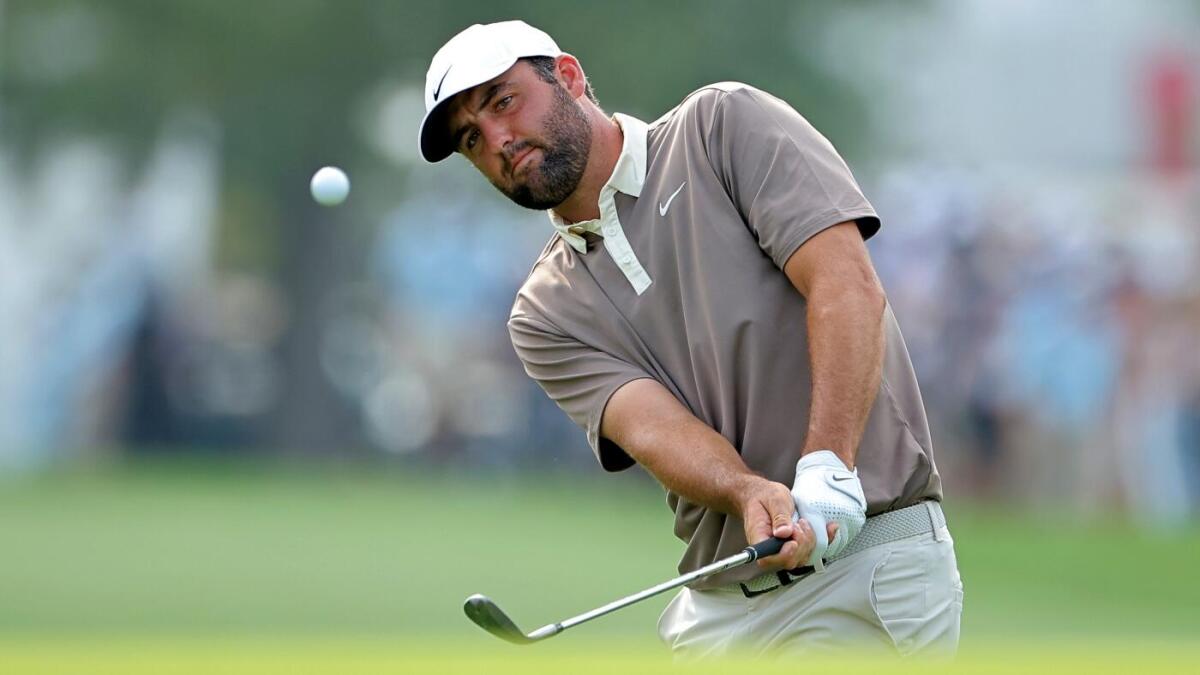The 2025 PGA Championship: Navigating Odds, Predictions, and Unexpected Contenders
The 2025 PGA Championship unfolding at Quail Hollow Club is more than just a tournament; it’s a complex interplay of skill, strategy, environmental factors, and cutting-edge statistical modeling. As the competition reaches its decisive fourth round, examining player form, betting odds, and predictive analytics reveals a compelling story behind who might claim the prestigious Wanamaker Trophy.
Scottie Scheffler: Leading with Momentum and Precision
World No. 1 Scottie Scheffler has emerged as the clear favorite, standing at an impressive 11-under after a commanding third-round 65, the best score on that day’s leaderboard. His position reflects not just individual brilliance but also a strategic mastery of Quail Hollow, a course demanding both accuracy and insightful risk-taking. With betting markets assigning him odds as tight as -450, Scheffler is positioned to reinforce his growing major legacy, expanding beyond his existing Masters success.
Scheffler’s approach combines aggressive play with calculated control, essential for navigating a course like Quail Hollow. His form and consistency suggest that he is capitalizing on his potential peak performance window, showcasing why he is the player favored to lift the trophy.
The Betting Ecosystem: Established Stars and Longshot Opportunities
Diving into the betting landscape reveals a fascinating blend of familiar elite names and wildcard entrants:
– Bryson DeChambeau’s +775 odds highlight his raw power and methodical style. His presence reflects how power hitters maintain relevance despite fluctuating form.
– Rory McIlroy, with modest odds around +475, represents a player whose recent unpredictability tempers expectations despite his pedigree.
– Rickie Fowler surfaces as a dark horse, valued for his previous strong showing at this championship in 2017, indicating that past course experience still matters in betting considerations.
Interestingly, the model and betting markets differ notably on certain figures:
– Xander Schauffele’s 19-1 odds contrast with the model’s prediction that he may falter and barely break into the top 10. This divergence suggests a gap between crowd sentiment and data-driven analysis.
– Justin Thomas, pegged as a 21-1 longshot, might surprise observers by mounting a strong late-round surge, underscoring golf’s unpredictability.
Predictive Modeling: Identifying Weekend Breakthroughs
A standout feature of this championship’s narrative is the sophisticated golf model employed, running tens of thousands of simulations per final round to forecast outcomes. Beyond highlighting favorites, it identifies longshots with odds exceeding 45-1, including an audacious 75-1 pick likely to make a breakthrough during the weekend.
This analytical insight challenges conventional wisdom, opening doors to exciting possibilities for bettors and fans who appreciate deeper layers of the game where timing, momentum shifts, and lesser-known player readiness intersect. It reflects how modern competitive golf increasingly integrates data analytics to redefine expectations.
External Variables: Weather and Scheduling Influence
Weather interruptions during Round 3 introduced delays that can disrupt player rhythm and strategy. These factors, such as wind shifts and altered course setups, heavily influence scoring and pressure handling on the final day. The golf model’s incorporation of these variables allows for nuanced predictions that factor in more than just raw performance metrics, providing a more robust outlook.
Track Record: Consistency in Major Championship Predictions
The model’s past accuracy bolsters confidence in its projections. Having correctly forecast 14 major championships, including four straight Masters victories, it demonstrates an exemplary melding of statistical precision and nuanced understanding of golf’s psychological and tactical dimensions. This goes beyond traditional fan speculation, adding credibility and sophistication to the tournament narrative.
Conclusion: A Championship Defined by Contrast and Complexity
The 2025 PGA Championship exemplifies golf’s multifaceted drama, blending dominant favorites like Scottie Scheffler with ambitious veterans and promising outsiders hungry for breakthrough moments. While Scheffler rides momentum amplified by precise play and bettor confidence, figures like DeChambeau and McIlroy strive to reclaim major dominance amid an ever-changing competitive landscape.
The presence of under-the-radar players hinted at by advanced modeling, coupled with the impact of weather on play dynamics, suggests that the final round will be as unpredictable as it is electrifying. This championship stands as a testament to golf’s unique fusion of human skill, data-driven insight, and the sport’s inherent unpredictability — promising a finish that will captivate audiences and challenge expectations alike.











